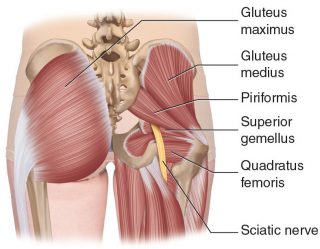What do you need to know about sciatica?
April 29, 2020 by Nitin Gautam
Sciatica is a word that everyone knows, but most people don’t understand what it actually means. So let’s start busting the myths and learning the facts about this common complaint.
The sciatic nerve starts in the lower spine and travels underneath the gluteal muscles. Once at the top of the leg, it splits and forms multiple nerves. The role of these nerves is to innervate the muscles of the lower limb and send sensory information back to the brain.
Contrary to popular belief, sciatica is not actually a diagnosis. Sciatica is a set of symptoms that can occur for a multitude of reasons.
Below are some of the symptoms you may have if your sciatic nerve is irritated:
-
Pain leg and/or back (usually described as burning or like an electric shock)
-
Pins and needles
-
Numbness
-
Weakness of muscles in the leg
-
Difficulty walking
The symptoms may be worsened by:
-
Coughing or sneezing
-
Bending forwards or backwards
-
Walking
-
Prolonged standing
The sciatic nerve passes through a vast number of structures, and any of these can trigger irritation. Below are some of the common causes:
-
Disc pathologies such as a herniated disc
-
Overactive muscles in the buttock that compress the nerve
-
Stenosis (narrowing) of the spinal canal
-
Bony spurs growing on the spine
-
Age-related degenerative changes in the spine
How is it treated?
A physiotherapist can provide a wide range of treatment strategies to resolve these symptoms. The first thing they will do is a comprehensive physical assessment to determine the cause of these symptoms. Once this has been achieved, a management strategy will be formulated to maximise your recovery. This may involve:
-
Mobilisations of spinal joints
-
Massage
-
Dry needling of over-active muscles
-
Exercises targeting mobility and strength
-
Stretches
-
Heat or ice therapy









